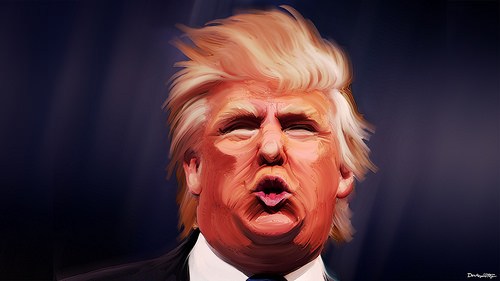Trump wants to raise tariffs. How will China respond?

Shelton hinted on Friday that China would be designated as a currency manipulator and that Trump is a man who “walks the talk.” Trump promised to declare China a currency manipulator on the first day he became president, and also threatened to impose a 45% high tariff on Chinese imports.
Once Trump determines that a country has exchange rate manipulation, the United States will not only provide support to that country through the IMF The Chinese government exerts pressure to adjust its exchange rate policy and is more likely to retaliate through trade means. Trump’s election may intensify capital outflows from China, thereby increasing pressure for RMB depreciation in the medium term. 45% tariff! That’s okay! At this time, many friends panicked.
But a careful analysis shows that although the United States is China’s largest export target, China’s trade exposure to the United States is actually shrinking. According to Morgan Stanley’s calculations, even if it mentions 45% Punitive tariffs will only reduce China’s total exports by 13%. The United States’ share of China’s total exports has dropped from 21% five years ago to 17%, but it contributes 43% to China’s trade surplus.
Data chart
Statistics from January to September 2016 show that China exported most to the United States in telecommunications equipment (US$56 billion), office facilities (US$47 billion), and electronic equipment (US$33 billion). Workwear ($24 billion), furniture ($16 billion). China’s most dependent industry on the United States is furniture, with exports to the United States accounting for 39% of total furniture exports, followed by metal ores and scrap metal (33%), footwear (33%), telecommunications and recording equipment (29%), Handbags (26%).
U.S. tariffs have limited ability to increase impact
If the United States raises tariffs on China, Chinese exporters will have limited ability to absorb the impact of higher U.S. tariffs because their profits are not high (5%). The increase in tariffs will be fully passed on to the price of goods exported to China.
Assuming that the U.S. tariffs on China are raised from the current 2.8% to 15%, 30%, and 45%, China’s exports to the United States will be severely hit and will decrease by 21% and 46% respectively. , 72%; however, the corresponding declines in China’s total exports in the medium term are much smaller, 4%, 8%, and 13% respectively.
However, a significant increase in tariffs by the United States may not happen immediately. Before raising tariffs, the Trump administration will first communicate with domestic and foreign parties on the matter. After the congressional bill is passed, it will also have to go through a lengthy domestic judicial review. In addition, the WTO has a series of mechanisms to resolve trade disputes. As a member of the WTO, the United States should give priority to the WTO to resolve trade disputes. Therefore, it is unlikely that the United States will actually implement tighter trade policies against China in the short term.
AAANHGMKJLOI87
Disclaimer:
Disclaimer: Some of the texts, pictures, audios, and videos of some articles published on this site are from the Internet and do not represent the views of this site. The copyrights belong to the original authors. If you find that the information reproduced on this website infringes upon your rights, please contact us and we will change or delete it as soon as possible.
AA





